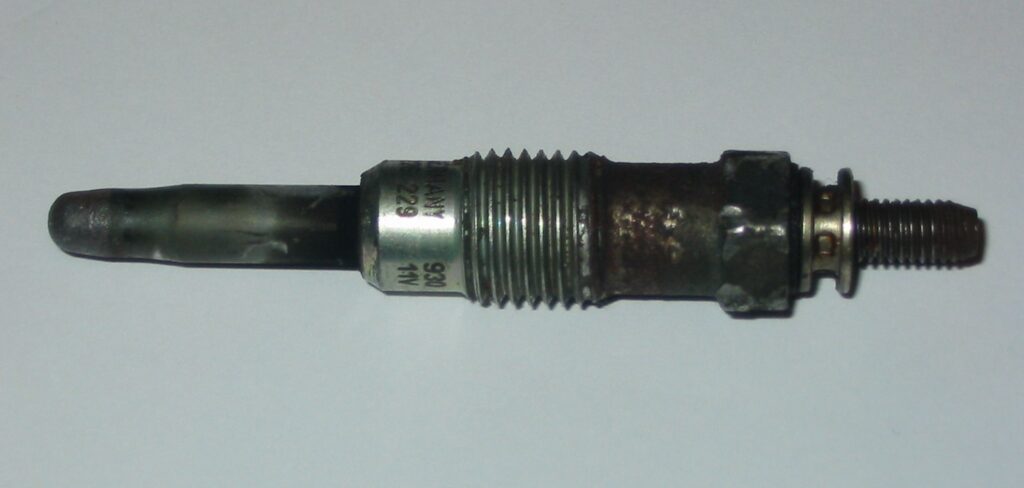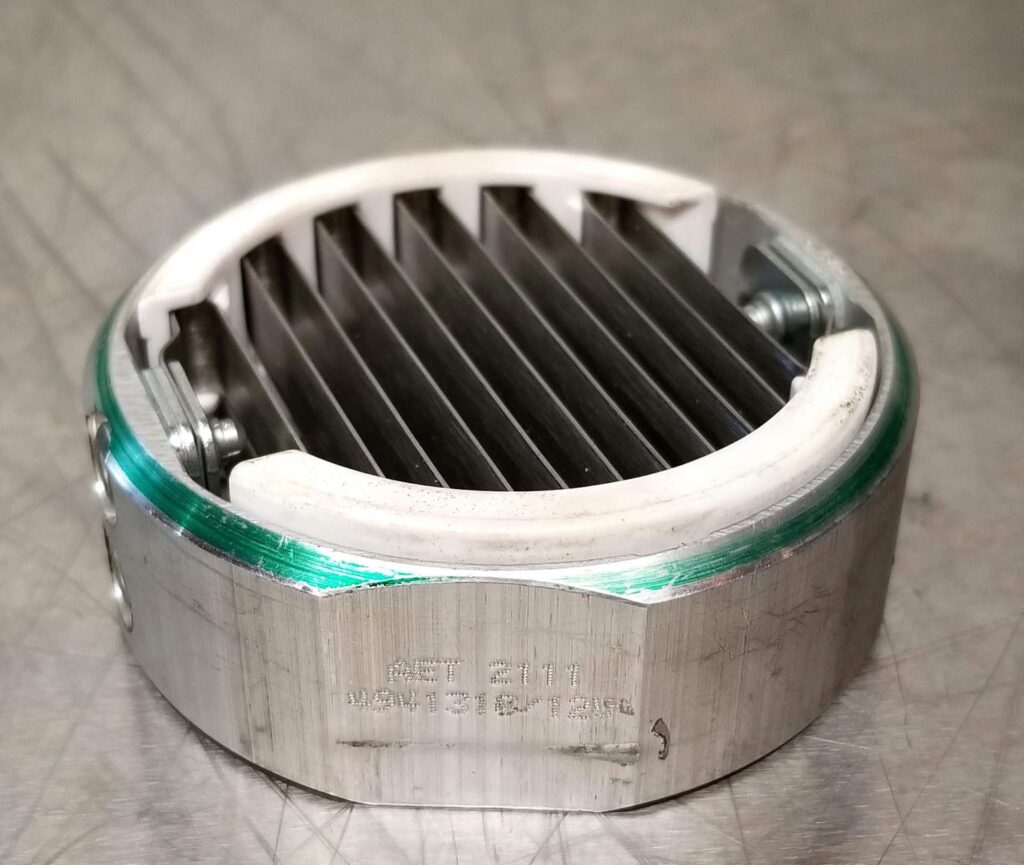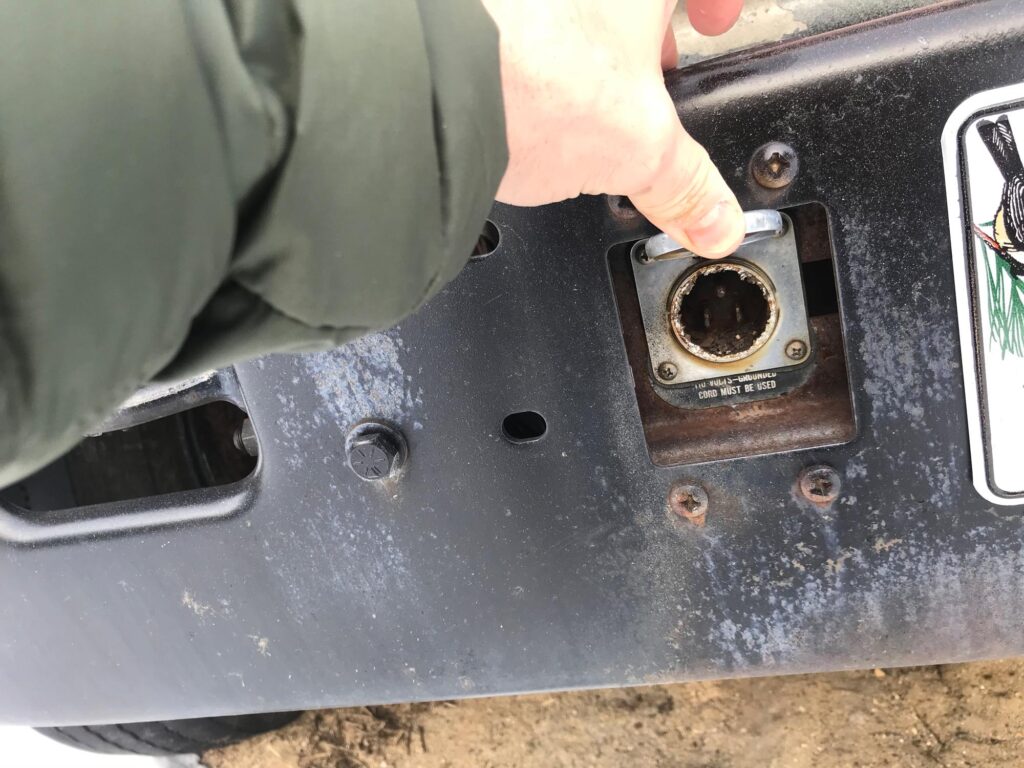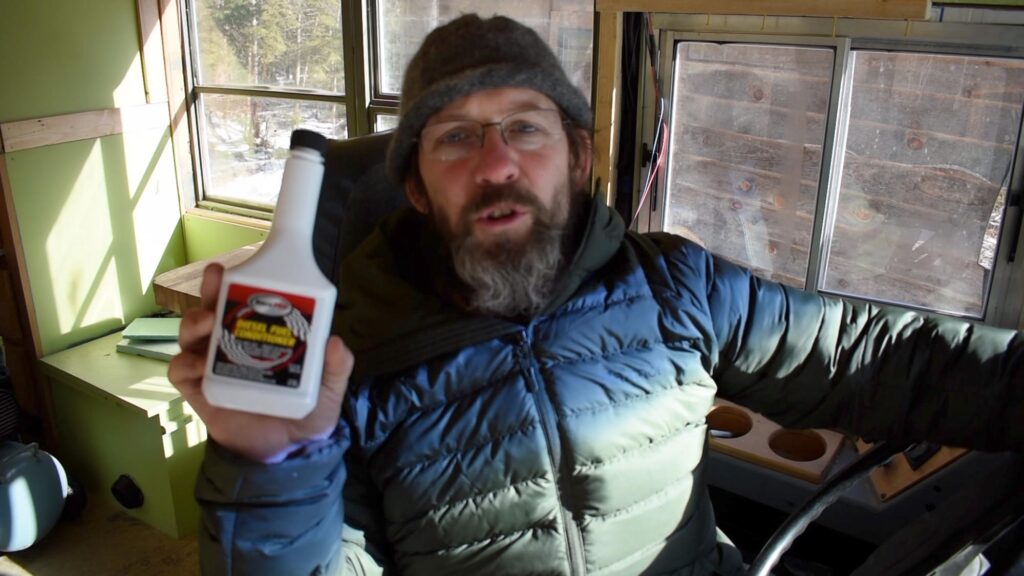Well…temps are really starting to drop and I’m seeing more people post that they’re struggling with starting a skoolie in cold weather.
Having lived all my life in the Northeast, I am well versed in the challenges of frigid climates. I’ve seen ice over 4 feet thick on the lakes. We had to use ice-auger extensions just to drill down far enough for ice fishing.
And I’ve learned some tricks for starting diesel trucks in cold weather.
Diesel Combustion vs. Gassers
Gasoline engines start by injecting a fuel / air mixture into the cylinders and setting it on fire with a spark plug.
Diesel engines don’t use spark plugs. They compress the fuel / air mixture so much that the temperature rises enough to combust.
Except when it doesn’t.
When temperatures drop too much, a diesel engine needs help.
Diesel Warmers
Glow Plugs vs Grid Heaters
In order to provide a temperature boost in icy climates, diesels often employ either glow plugs or grid heaters. Both raise the fuel / air temperature enough to initiate combustion even without a spark plug.
Glow plugs function as little heaters in each cylinder.

Grid heaters warm the air coming into the intake before it is mixed with fuel. (Imagine a hairdryer).

Many people prefer grid heater technology because if something goes wrong it’s easier to fix one grid heater than multiple glow plugs.
Block Heater
Many busses adapted to cold weather use come with block heaters. You can tell if you have one by looking for what looks like and extension cord plug usually under the front bumper.
Plug this into an extension cord (I recommend a heavy duty one…10 or 12 gauge) 3-4 hours before starting the engine.

The block heater will warm up the oil and reduce the drag on the starting crank.
And, for some extra help, I’ve actually seen some people use a heat gun and warm up the fuel filter and fuel lines.
Battery Power
Whether a grid heater or glow plugs warm the air, the engine still needs to develop significant compression in order to generate combustion. In order to crank the engine with sufficient torque to generate this compression, the batteries must be fully charged.
And note I said batteries…plural. In cold weather large diesel engines will need more than one battery. In the summer when the oil is warm, one battery will often be sufficient.
In cold weather, however, the cold, thick, stiff oil provides quite a bit of resistance. Thus, more power will crank the engine over with more velocity.
If you’re having trouble getting started, check your battery power with a multimeter. Set the dial of the multimeter to 20 Volts, then press the red lead on one of the battery’s positive lug (red). Next, press the black lead against the black lug. Your batteries should be reading at 12 Volts or more.
If your batteries read less than 12 Volts, you will most likely need to charge (or replace) your batteries. If there’s a vehicle with a larger battery (like a truck) nearby, you might be able to get a temporary boost with some jumper cables, you’re better off with a battery charger. (Using jumper cables for extended time can heat them up!)
In fact, keeping batteries on the “trickle charge” setting in cold weather really helps keeping them topped off!
Fuel Treatment
Unlike gasoline or kerosine, diesel fuel gels once the temps drop to around 10-15 degrees Fahrenheit. In northern climates, fuel stations switch to a winter mix fuel in the fall, which contains additives to keep things from gelling in the fuel tank and fuel filter.

It’s not a bad idea, however, to add an additional diesel fuel additive. Fuel additives provide a little extra protection as well as cleans injectors.
Ether or not to Ether
Many people suggest using spraying blast of ether / starting fluid into the air intake for stubborn diesels. My bus even has an “Ether Start Button” so that you can install a can of ether in the engine compartment and when you push a button it injects a blast of ether into the air intake.
I don’t use it.
People debate this often. It often gets more heated than an old “Less Filling Tastes Great” beer commercial.
Many say that it does no harm and they used ether to start Noah’s Ark when it was cold.
Others post pictures of blown cylinders as evidence against it.
As with most things, most likely there’s truth in both camps.
You probably can use a blast of starting fluid here and there and not damage the engine.
But I don’t want to risk it.
Ether is a solvent. So when it hits the cylinder walls it dissolves the oil there to protect the metal. Then you have metal scraping against metal instead of on a film of oil. Can’t be good.
So…as always…do the research and decide whether it’s worth it for you in your situation.
Pre-Ignition Cycle
Most of the time I am able to start my bus without the block heater. However, I have to cycle the start sequence several times. For example, I turn the key to the “on” position and listen for the starting sequence clicks to cycle through. This means that the fuel pump has built pressure and the grid heater has warmed.
Then, I turn the key to “off” and repeat that process two or three times.
This usually, (as long as my batteries are fully charged) starts the bus.
The !@#$!@#%% Bus Still Won’t Start
If you have fuel, air, and battery power and your bus still won’t start, then the bus may have more significant mechanical issues.
Perhaps the glow plugs, the grid heater or the grid heater relay (which turns the grid heater on) may be faulty.
Or, old, leaky injector seals don’t allow the cylinders to produce enough compression to heat up the fuel mixture.
Or, worst case scenario, the engine can’t generate enough compression due to some problem with the pistons and / or cylinder walls. This scenario would most likely require some sort of engine rebuild. (I hope this isn’t the case.)
Skoolie Diesel Cold Start Conclusion
Like people, diesels have a hierarchy of needs.
They need fuel, air, compression, and enough cranking power to build compression.
Treat your fuel and keep the tank full.
Make sure that in cold weather either glow plugs or grid heaters warm the air.
Use multiple batteries and check that they are fully charged.
If you have a block heater, plug it in 3-4 hours before you need to start so those batteries don’t have to overcome the drag of thick oil.
And if you’re like me…dream of summer!
All the best,
Ted
